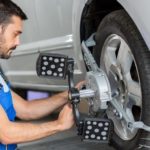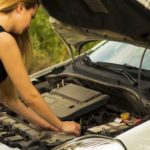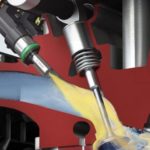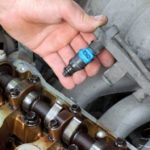
Vibration in cars is a fairly typical problem. Whether you’re driving a new or used automobile, you may notice weird vibrations, sounds, bumps, or drifting while driving. So, can a bad alignment cause vibration?
Table of Contents
Can a Bad Alignment Cause Vibration?
It’s possible that the alignment was done wrong or that something wasn’t properly tightened, which causes the car to vibrate. There are several variables that produce vibration, including defective or loose front-end parts, tires out of balance, and so on. A bad tire will cause vibration, too.
Can Bad Alignment Cause Vibration When Braking?
The short answer is Yes, when the brake system is applied, improper alignment might cause vibration. Alignment is critical, and you must align the wheels after having your car repaired at a mechanic’s shop.
Driving becomes smoother and more enjoyable when your car’s wheels are correctly aligned. When your wheels are out of alignment, though, you will notice a variety of strange symptoms, including vibration. Brake pads and a variety of other smaller parts under the hood might be harmed by poor wheel alignment. This is especially common in autos with disc brakes.
If you notice strange vibrations during braking, make sure to inspect your wheels and braking system, and address any problems you find as quickly as possible.
The Top 5 Causes of Car Vibration
1. Tire issues
Vibration problems are most commonly caused by tires. Here are a few examples of how tires might cause vibration problems:
Tire imbalance
The tires may be uneven if your automobile rattles exclusively at specific speeds. Small weights can be added to your tires by a professional to even them out and reduce the imbalance.
Uneven tire wear
If you don’t rotate your tires on a regular basis, your front and back tires will wear at different rates. Vehicle vibration may result as a result of this.
Tires that are “out of round”
A faulty tire might become “out-of-round,” which means it is no longer precisely circular. As a result, there is banging and vibration. The majority of the time, this is covered under the manufacturer’s warranty.
Tires that are not correctly inflated
If you under or overinflate the tires, your car may slide and rattle because your tires will not make consistent contact with the road. This can be remedied by using a home tire gauge to check your tire inflation and inflating the tires to the PSI advised by your owner’s manual.
2. Engine problems
Engine problems can cause cars to shake while driving, however, this is a rare occurrence. The engine department is frequently the source of this shaking or trembling. The following are some of the most typical reasons for this:
- A blocked or dirty fuel filter
- Spark plugs that aren’t performing well
- In the piston, there is a poor air/fuel mixture.
- There isn’t enough air in the engine.
If the vibration occurs more frequently during acceleration or just after you’ve driven for a certain amount of time, your vibration troubles could be produced by the engine. Get your car checked out as soon as possible. These problems, if left addressed, can cause catastrophic harm to the engine compartment.
3. Brake rotors that are warped or damaged
If your car shakes more when you hit the brakes, your brake rotors are likely to be the source of the problem.
In current disc braking systems, the brake rotor is the disc-shaped component. It’s in charge of delivering pressure to the brake pads, which make contact with your wheels and slow your automobile down. If you don’t change your brake pads on a regular basis, the rotor might become distorted and warped. Essentially, a portion of the rotor overheats and becomes distorted.
The brake calipers and pads won’t be able to gain a good hold on the brake rotor if this happens. As a result, vibration occurs, which is normally only noticeable while stopping or using the brakes.
If you suspect this is the case, see a brake professional as soon as possible to avoid further damage to the brake rotors.
4. Axles/driveshaft that is uneven or bent
Another typical cause of car vibration is uneven or deformed axles. Your car’s axles are the lengthy, spinning shafts that connect to your wheels and transmit power from your transmission.
Axles can be bent by crashes or driving over a speed breaker or an object on the road, despite their toughness. If this happens, you’ll notice that your automobile begins to jostle as you drive, with the vibrations becoming more intense as you accelerate.
It’s also possible that you have a damaged driveshaft. This is a fast-spinning component that transfers engine power to the axles and wheels, and it can rattle and shake if deformed or damaged.
5. Wheels that are misaligned or wobbly
When you remove your hands off the wheel, your car will normally “drift,” and the steering wheel itself may quiver or shake if your wheels are misaligned. This is a rather simple fix: simply get your automobile aligned and the problem will be remedied.
However, vibrations can sometimes be caused by the wheel itself. Due to poorly torqued lug nuts, the wheel hub may be unsteady. The wheel bearings may also be worn out, though this is more likely to happen if you drive off-road or for a long period of time.
Excessive runout can also occur as a result of wheel wear. When a wheel is spun, runout defines how far it deviates from a perfect revolution if runout reaches around a centimeter, the wheel should be replaced.
What Are the Consequences of Poor Alignment?
1. Vibration when braking
A faulty alignment can impact disc brakes, and if not corrected in a timely manner, it might produce vibration when you push down the brake pedals.
However, there are a variety of additional reasons why your automobile vibrates when braking, with incorrect alignment being one of the most common.
2. Inconsistent tire wear
Uneven tire wear is one of the most typical side consequences of poor alignment. Because the wheels are not perfectly aligned, additional stress is placed on the tires, causing them to wear out faster or possibly tear.
This wear and tear occurs because your car struggles to maintain a lane, prompting you to turn the steering wheel erratically to stay in your lane. As a result of this ongoing struggle, your tires are under increased stress, resulting in uneven wear and tear.
3. Suspension component damage
Because incorrect alignment puts greater stress on the different components that make a car run, it can lead to damage to particular suspension components.
Modern cars’ underhood designs are complex, and the parts found there are frequently interrelated, which means that one component’s failure might lead to the failure of others.
Conclusion
A bad alignment can cause vibration. This is why I want to emphasize how important a regular maintenance schedule is. You can notice problems sooner and solve them before they turn into more expensive fixes.
It’s also not typical for your car to shake or vibrate at high speeds, such as 60 mph. As a result, if you see this, you should inspect your vehicle and address the underlying reason. Ensure that your vehicle is repaired by a mechanic. Mechanical concerns should not be attempted on a do-it-yourself basis.
Hi there! I’m Naomi O’Colman. I’ve got years of experience working at an auto repair shop here in Texas under my belt. On top of that, ever since I was a kid I’ve been passionate about the auto industry. Since I’ve joined the team at automotivegearz.com I’ve been enthusiastically sharing my passion and insights with my readers. I’m dedicated to delivering high quality content and helping you stay up to date with the latest automotive trends and products out there!







